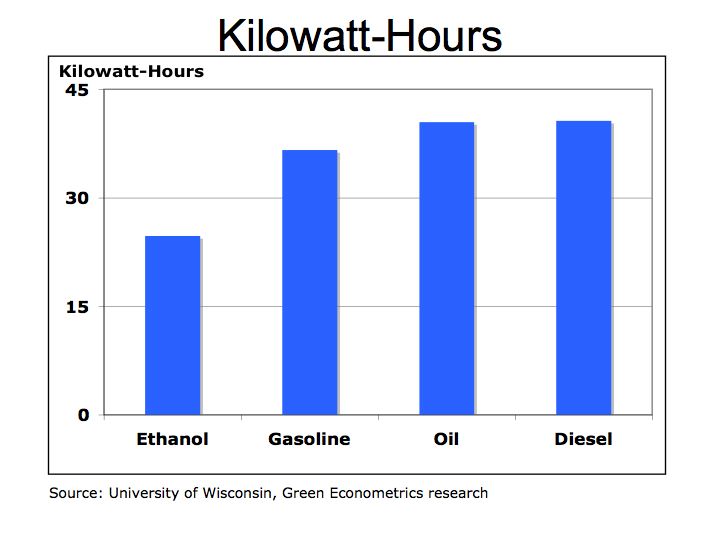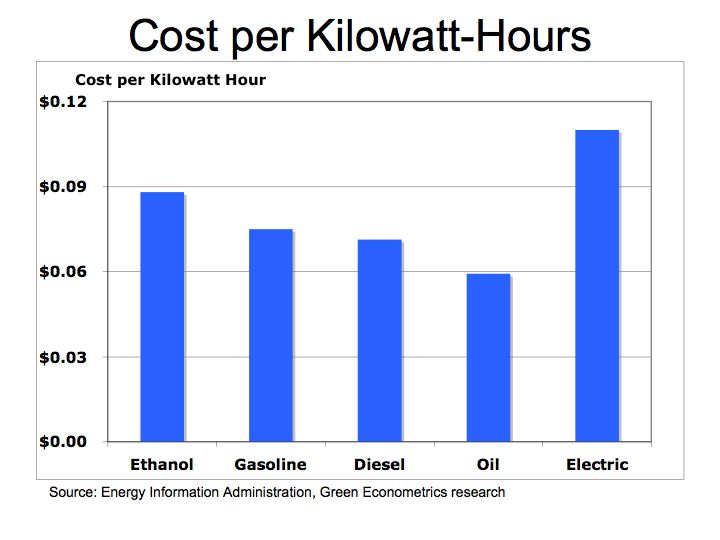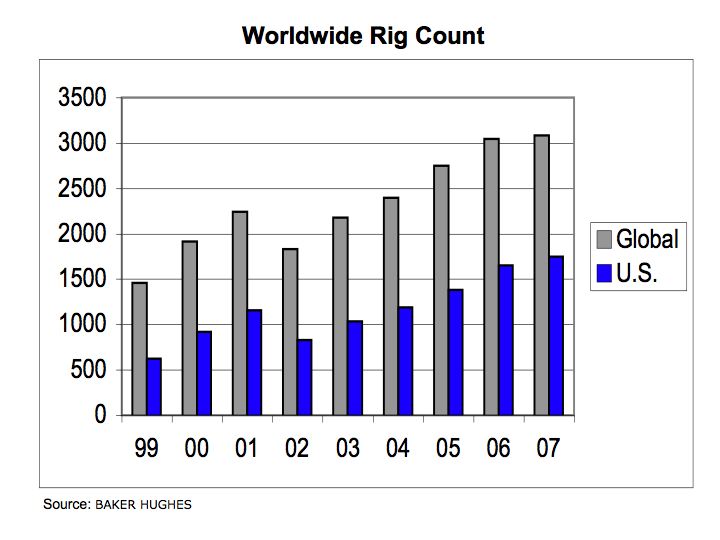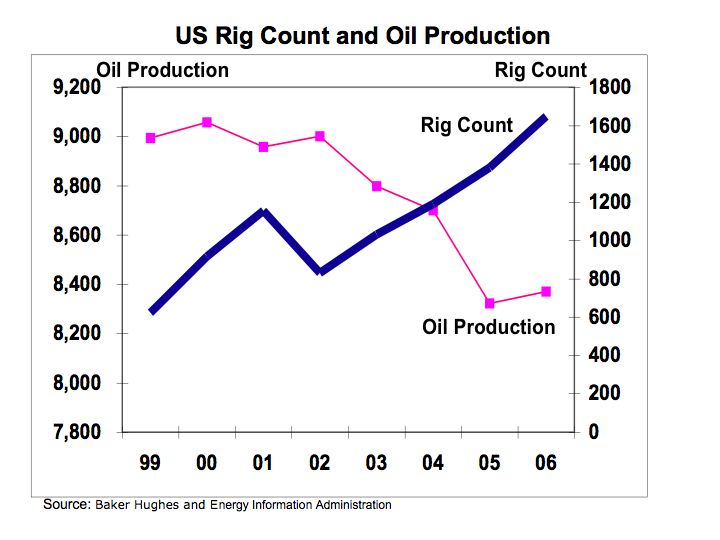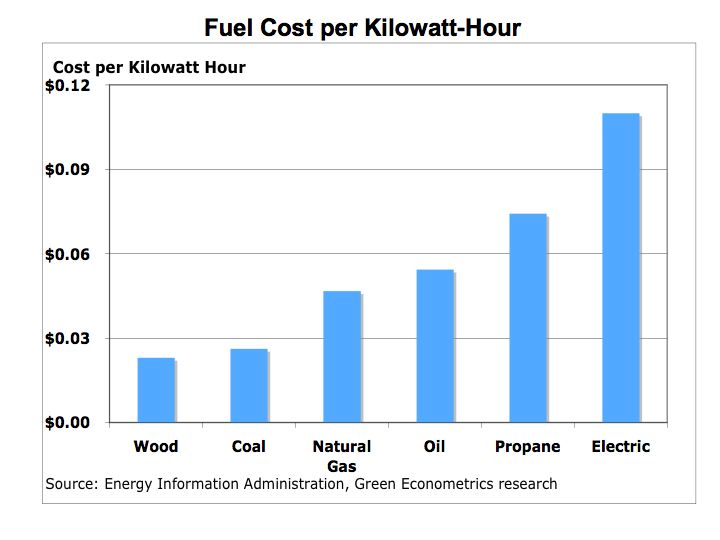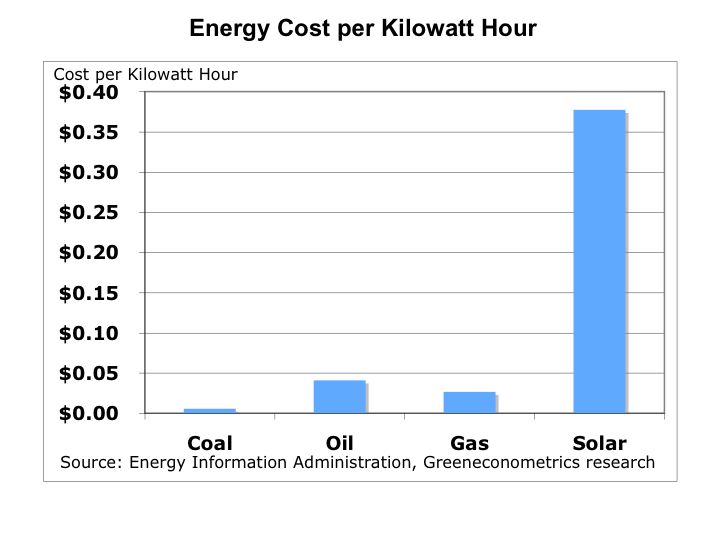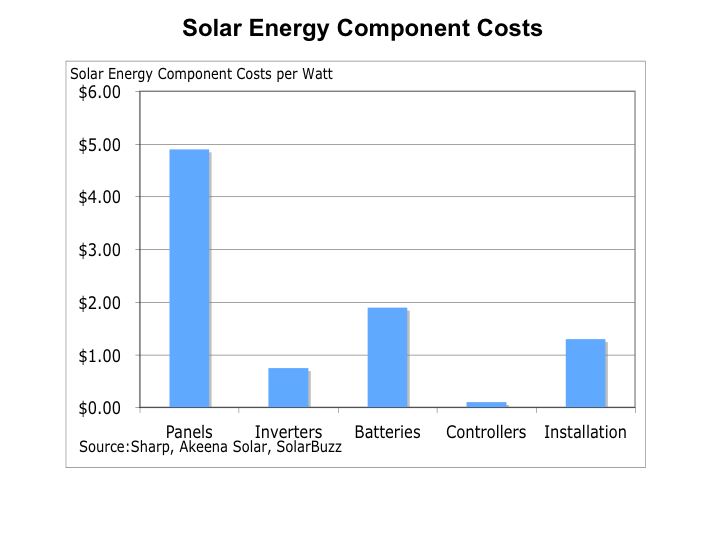Solar Energy: The Security Perspective
The U.S. Department of Energy (DOE)’s $23.6 Billion Spending Plan for FY’07 calls for $1.5 billion for the Office of Energy Efficiency and Renewable Energy where spending includes $28 million in solar, $16 million for thin-film photovoltaic manufacturing equipment to reduce the cost of solar panels, $23 million for researching ethanol, and $100 million for carbon sequestration research. However, more than half of the DOE spending is targeted towards research on weapons, defense, and security. Perhaps our national security would be better served if the U.S. were not dependent on foreign oil. Investment into alternative energies like solar and fuel cells could provide us with energy independence with less concern over protecting oil in foreign lands.
Solar energy is significantly more expensive than conventional hydrocarbon fuels. In Green Econometrics’ prior analysis of fuel efficiencies and costs, we found solar energy cost approximately $0.38-to-$0.53 per Kilowatt-Hour (KWH). See Understanding the Cost of Solar Energy
There is considerable variance in the cost of solar energy because sunlight availability varies by geography and climate. With limited sunlight solar costs could be over $1.00 per KWH. In terms of cost per KWH, solar energy is four-to-ten times the cost of hydrocarbon fuels.
Figure 1 Cost per Kilowatt-Hour
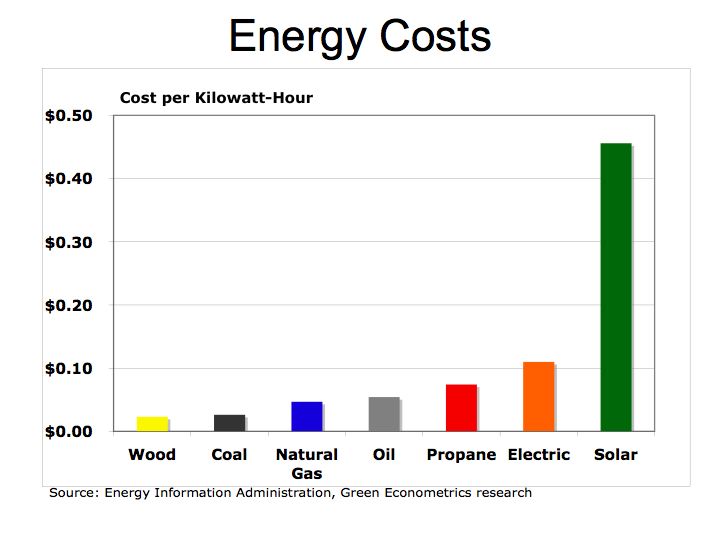
For solar energy to be at parity with conventional fuels solar energy needs to be subsidized through tax incentives, utility rebates, and research funding. Research is perhaps the most important aspect of improving the economics of solar energy because through research companies could dramatically lower production costs. The disconnect in solar energy research is limited funding. Funding is required to incubate ideas and new approaches to solar energy in order to develop a roadmap for commercialized products that in turn, could be embraced by venture capital.
The DOE’s research funding for solar is just a drop in the bucket or barrel that better correlates the magnitude disparity. Electric utilities companies are providing electric power generated mainly through coal, which contributes heavily to CO2 emissions, and yet they don’t spend on research and development towards alternative energies. Large energy companies like Exxon Mobil (XOM) don’t have R&D budgets like pharmaceutical or technology companies that spend 14%-to-20% of their revenues on R&D. Merck (MRK) and Genentech (DNA) spent 17% and 20%, respectively on R&D while Microsoft (MSFT) and Google (GOOG) spent 15% and 14%, respectively on R&D in 2006.
If Exxon Mobil were spending 10% of its 2006 revenues of $377.6 billion towards R&D to develop alternative energies, it would amount to over $37 billion, a figure that is larger than the DOE budget of $23.6 billion. DOE spending on solar energy research is approximately $28 million. According to the DOE, U.S. energy expenditures in 2004 were over $869 billion. So with that amount of money being spent on energy, how much should be spent to avoid dependence on foreign oil?
Figure 2 Historic Energy Spending
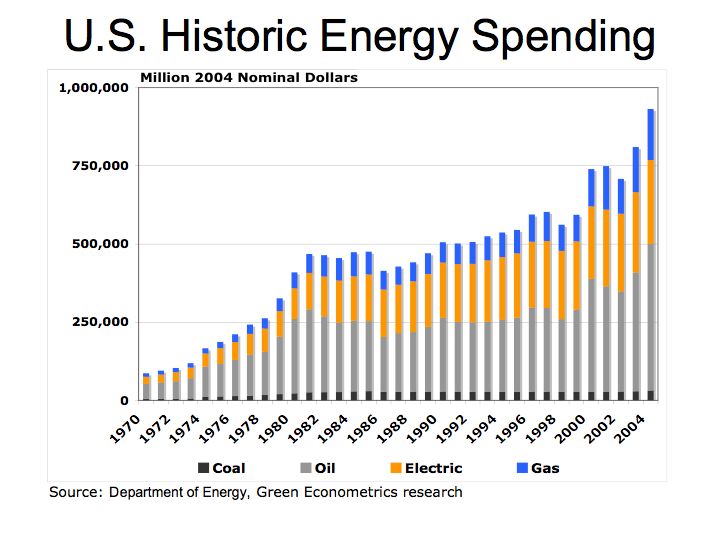
Solar energy and fuel cell technologies have the potential to ameliorate our energy dilemma of foreign oil dependence and risk of climate change from carbon emissions. While it’s hard to measure the economic impact of climate change, our dependence on foreign oil leaves us with growing $450 billion debt for our presence in Iraq and our national security vulnerable to vagaries of oil prices. The Cost of Iraq War The $450 billion the U.S. is spending in Iraq is almost enough money to equip the 124.5 million homes in the U.S. with a 1 KW solar energy system. The U.S. housing units rose to 126.7 million in 2006. Of course that may not cover your total electric usage that averages about 10,760 KWH per household according to data from the Energy Information Administration Electric Power Annual 2005 – State Data Tables
Can higher R&D spending on solar energy help?
Even some of the leading domestic solar photovoltaic cell suppliers are light on R&D spending. SunPower (SPWR) and First Solar (FSLR) are budgeting their R&D spending towards the single digits as a percentage of revenues. Despite relatively low R&D spending levels, SunPower intends to lower solar panels cost by 50% by 2012. Solar photovoltaic cells undergo the same production processes as semiconductors. Experience curves associated with semiconductor production indicate a 20%-to-30% cost reduction with doubling of production. See The experience curve or cost-volume curve article from the Lockwood group TECHNOLOGY TRANSFER: A PERSPECTIVE The solar energy market is expected to grow at 80% over the next five years according to Rhone Resch, president of the Solar Energy Industries Association Solar Leader Expects >80% Market Growth Even without new advances in photovoltaic materials, with a solar energy market growth of 25% and an experience curve of 30%, solar cost could decline by 30% every three years from about $8.90 a watt ($0.45 a KWH) to $2.14 a watt or $0.11 a KWH in 15 years equal to the current price of electricity. The bottom line is that faster market growth and/or increased funding of solar energy research could significantly improve the economics of solar energy and give the U.S. greater security and energy independence.
Solar and alternative energies represent a very small percentage of our total expenditures on energy. Energy Price and Expenditure Estimates by Source
So a substantial reduction of solar energy costs, assuming somewhat elastic demand, we should see significant growth in solar energy. In addition, if we tax hydrocarbon fuels by their respective carbon emissions, we might begin to see level energy playing field.
Figure 3 Energy Spending
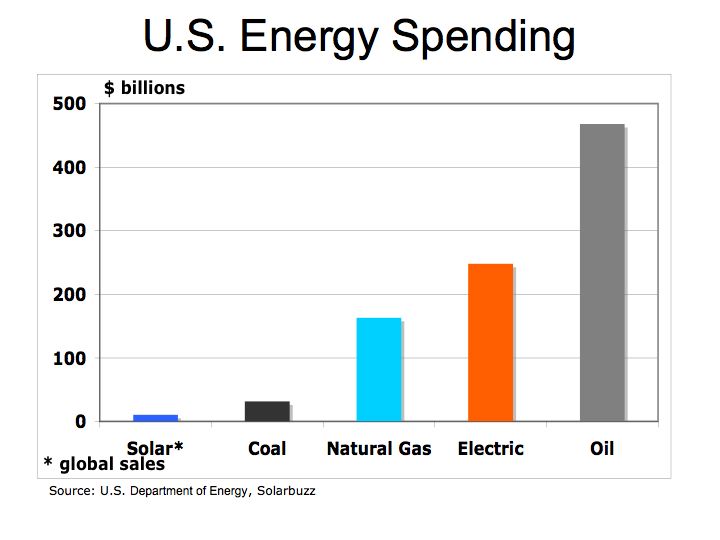
Funding solar energy should be views as a strategic imperative at par with national surety. Energy security should equate to national security and alternative renewable energies should provide us with the means to our energy independence.
